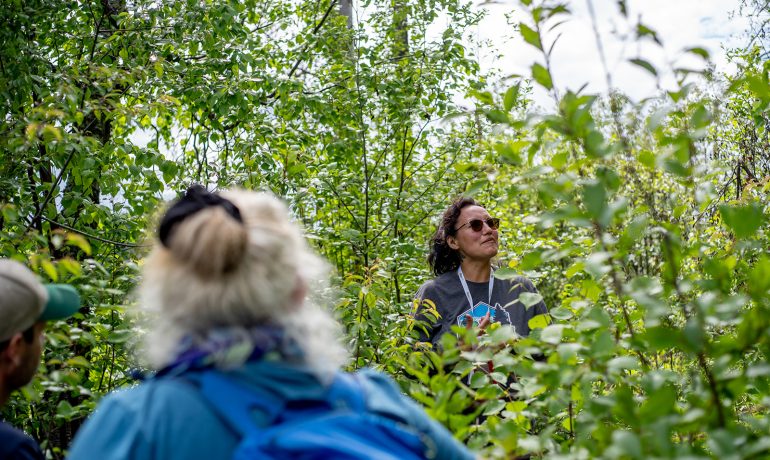From the Pacific Institute for Climate Solutions:
Researchers from Canada and the United States want to de-escalate the devastating forest wildfires that are increasingly occurring due to climate change, while strengthening development of a forest-based bioeconomy in British Columbia (BC), boosting carbon uptake and reducing emissions.
These goals are part of a $1 million, four-year Theme Partnership project called “Wildfire and Carbon” announced today by the Pacific Institute for Climate Solutions (PICS), which is hosted and led by the University of Victoria. The project team includes scientists from the Canadian Forest Service, the University of British Columbia (UBC), and the USDA Forest Service.
Judi Beck, director general of Natural Resources Canada’s Pacific Forestry Centre, explains that managing forests to achieve emissions reductions involves many complex trade-offs. For example, wildfire risk reduction activities—such as controlled burning to reduce fuel loading and create fire breaks—release greenhouse gases and smoke which contribute to climate change and affect human health.
“Recent unprecedented wildfires in BC, Alberta, California and now Australia show that we need to take a long-term approach in managing our forested landscape and to address the impacts of climate change.”
“For example, can short-term increases in emissions from fuel reduction treatments, bioenergy use and creation of fire breaks be justified given the expected emission reductions from less severe wildfires in the future?” adds Beck. “These are the questions we are looking to answer.”
Werner Kurz, Natural Resources Canada senior research scientist and principal investigator (PI) of the Wildfire and Carbon project, says wildfires can quickly wipe out the carbon uptake and storage provided by living forests. “For example, direct emissions from British Columbia’s 2017 and 2018 wildfires were each more than three times those of all BC’s sectors combined,” he says.
Kurz says the project will investigate opportunities to reduce future emissions through proactive landscape management, including fuel reduction that makes use of the biomass in a bioeconomy. Biomass derived from thinning, the creation of fire breaks or from wood left after harvest that is currently burned in slash piles could instead be used in long-lived wood products such as building materials, which store carbon and are a substitute for emissions-intensive steel or concrete, he says.
Lori Daniels, a co-PI and professor with UBC’s Department of Forest and Conservation Sciences, says the project is aiming for transformative change.
“We envisage a future where the goals of fire risk reduction, bioeconomy, emissions reduction and increased resilience of the forests to climate change, can be quantified, evaluated, managed, and achieved,” she says. “Being able to share our Canadian and US expertise, analytical tools and data is incredibly important for ensuring the resilience of our Pacific Northwest forests, including the coastal, mountain and boreal forest landscapes.”
“This project affords us opportunities to merge simulation of wildfire and forest successional dynamics with carbon accounting. Wildfires create ‘landscape “memories’ that influence future fire severity and extent. By getting the fire on fire interactions right, we hope to improve carbon accounting under current and future climates,” says co-PI Paul Hessburg, a US Forest Service senior research scientist.
IMAGE: 2018 BC wildfire. Source: BC Wildfire Service. Copyright (c) Province of British Columbia.
Related Post
As Published in Canadian Forest Industries Magazine, Pulp & Paper Magazine and Canadian Biomass Magazine
Jennifer Gunter’s Op Ed, “Community Forests: Rooted in Community,
Minister of Forests Mandated to Expand BC’s Community Forest Program
In the recently released mandate letter to the Minister



